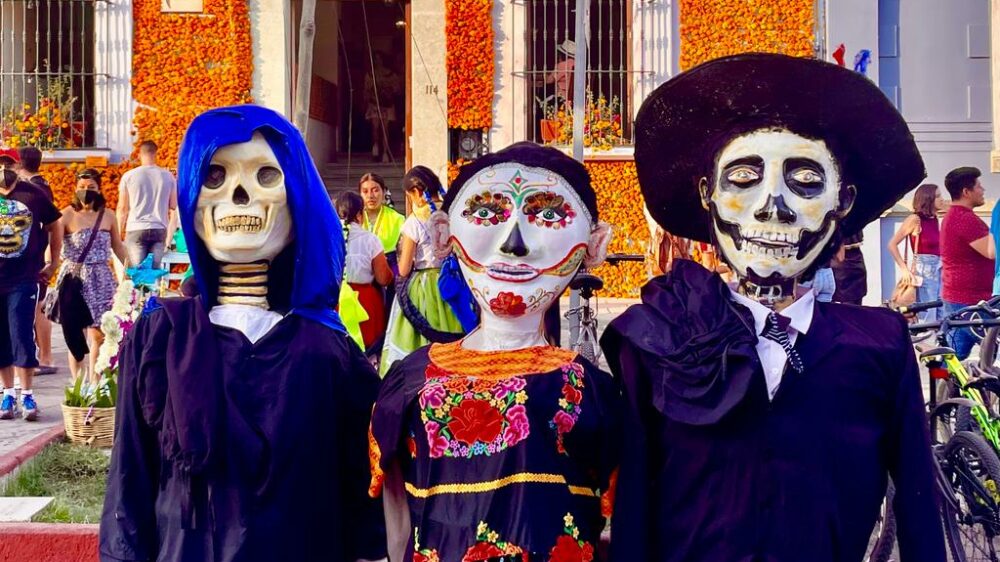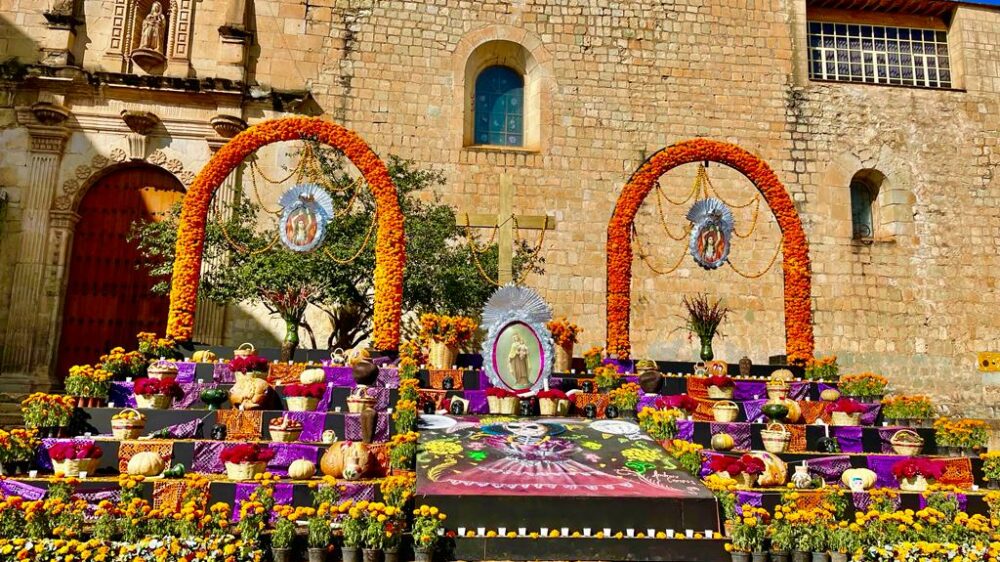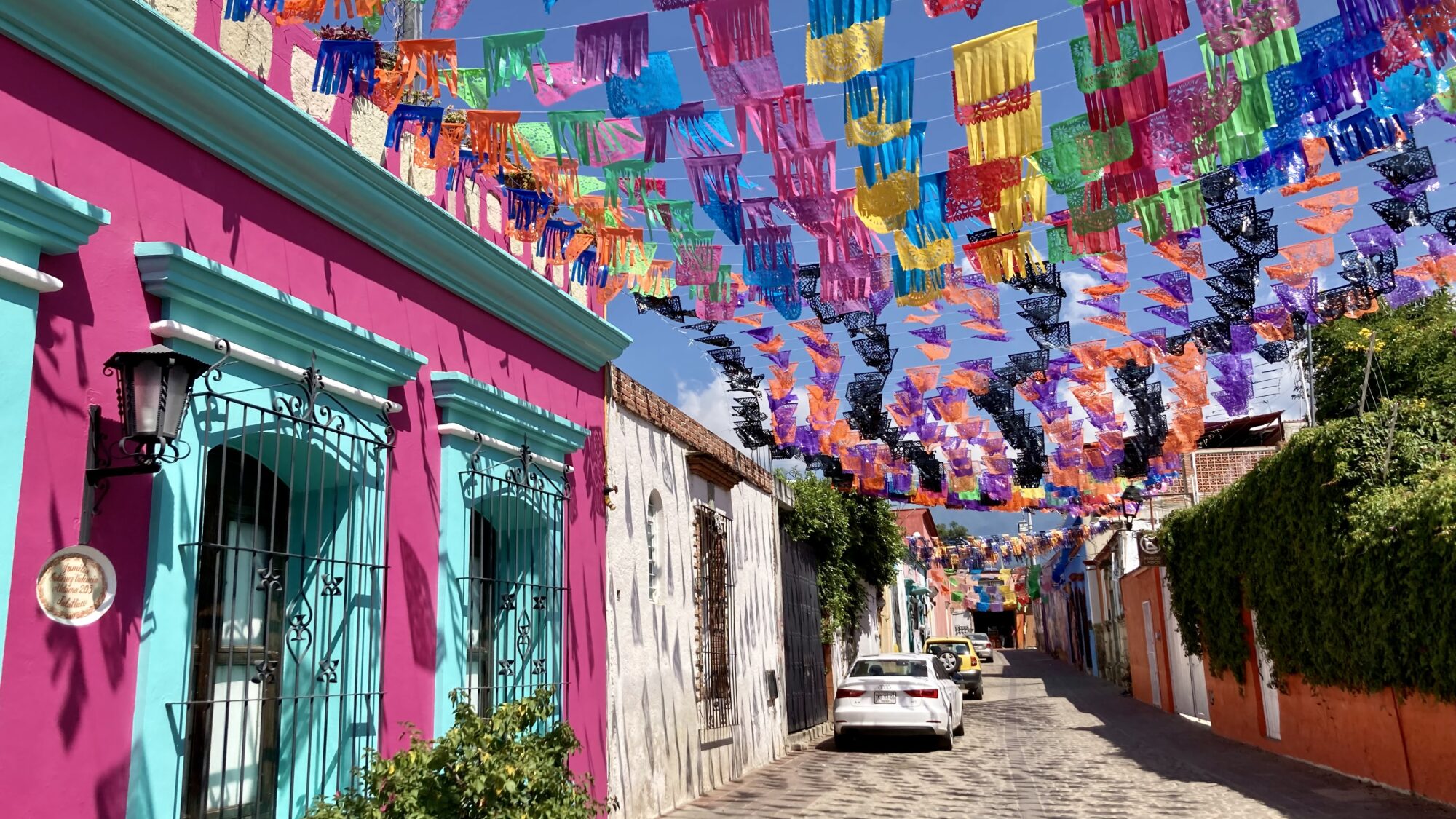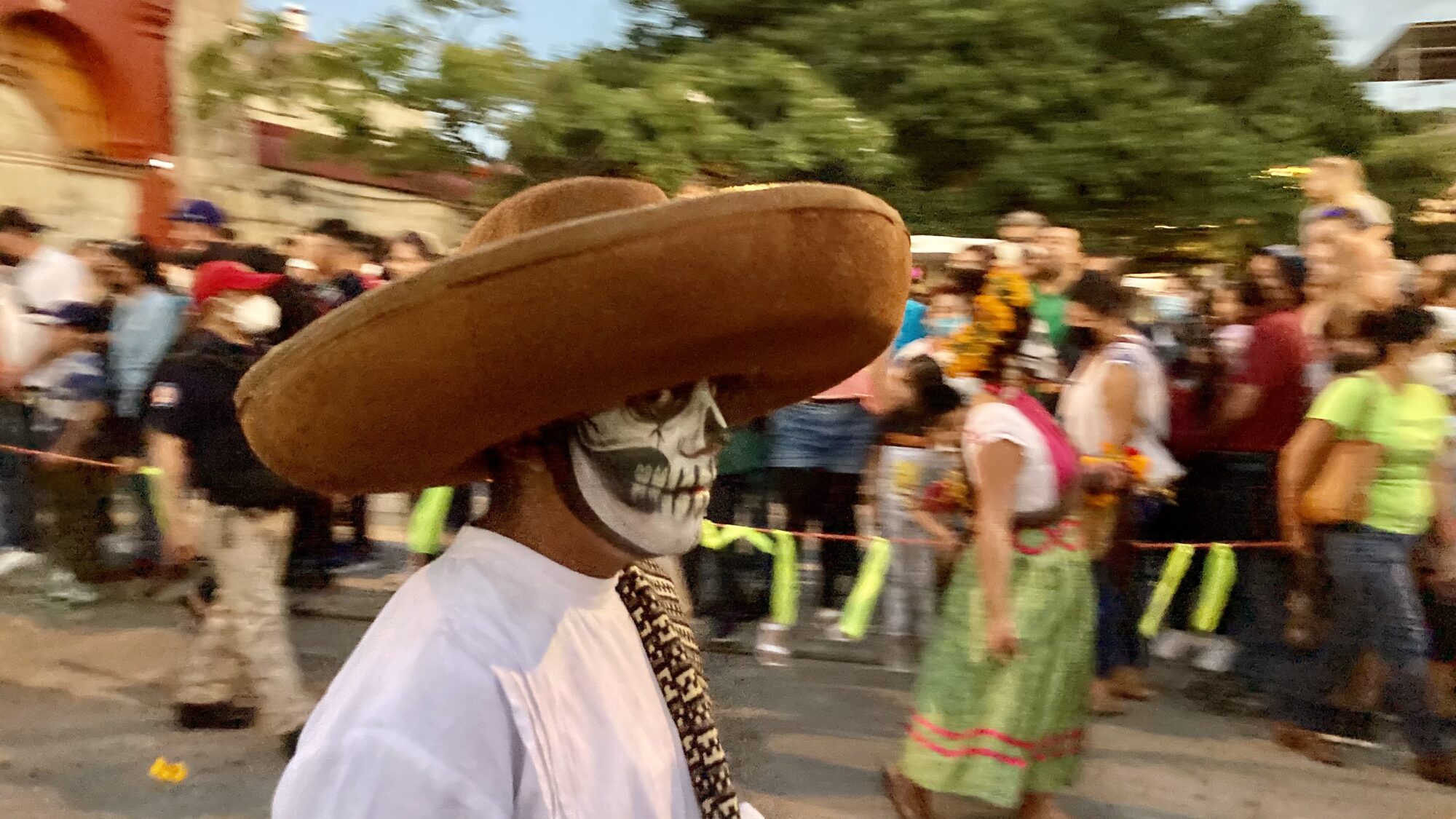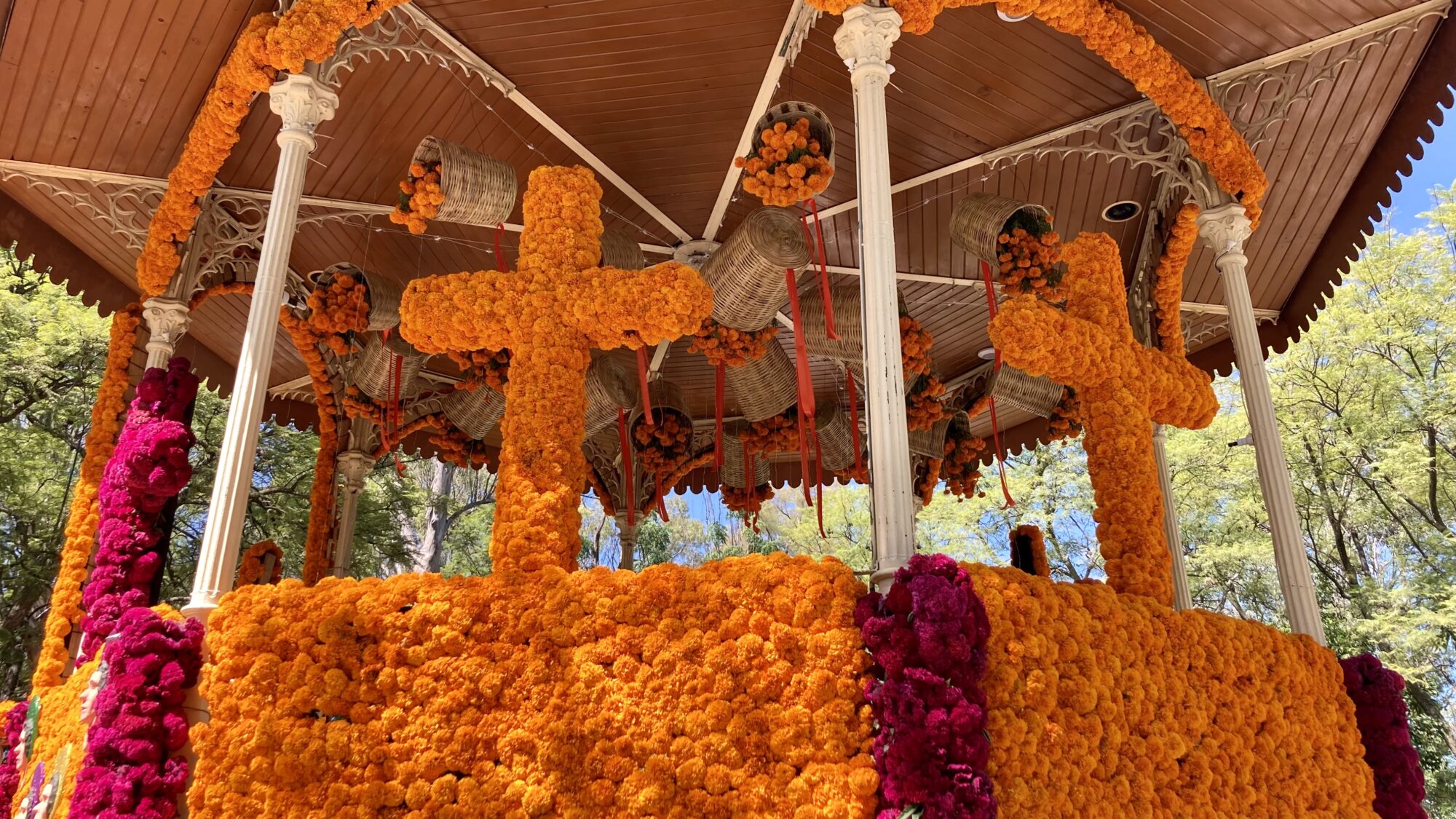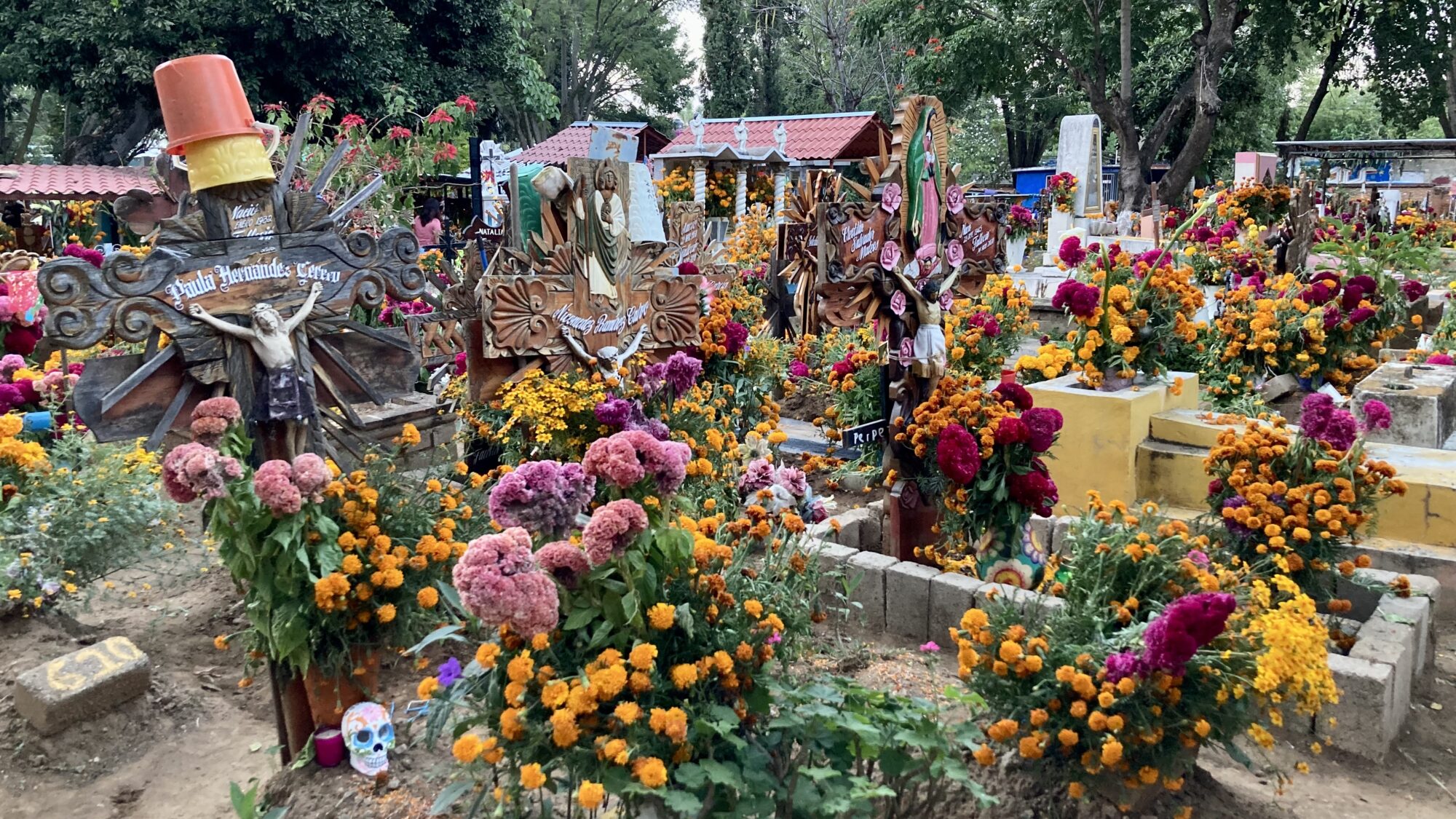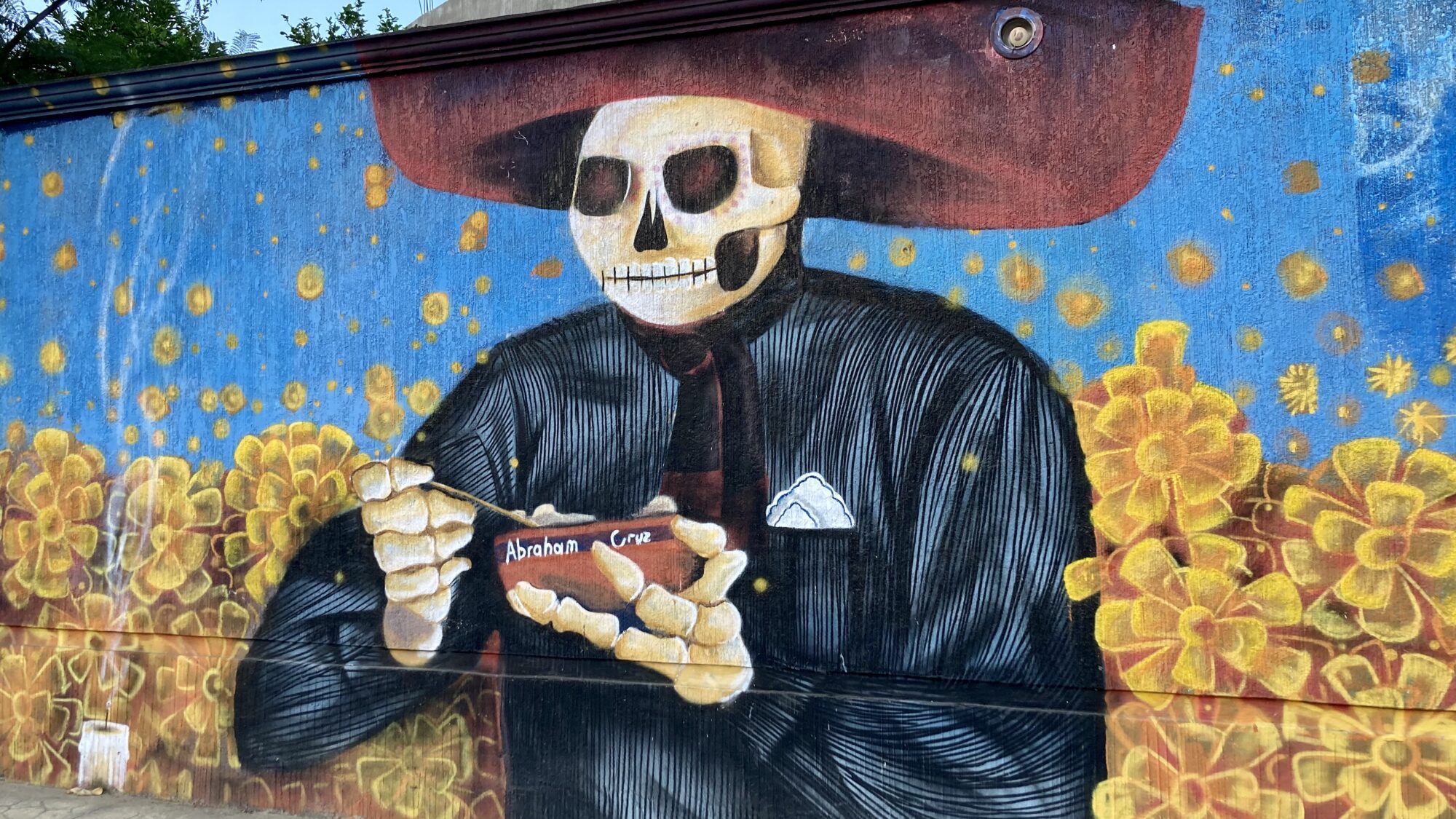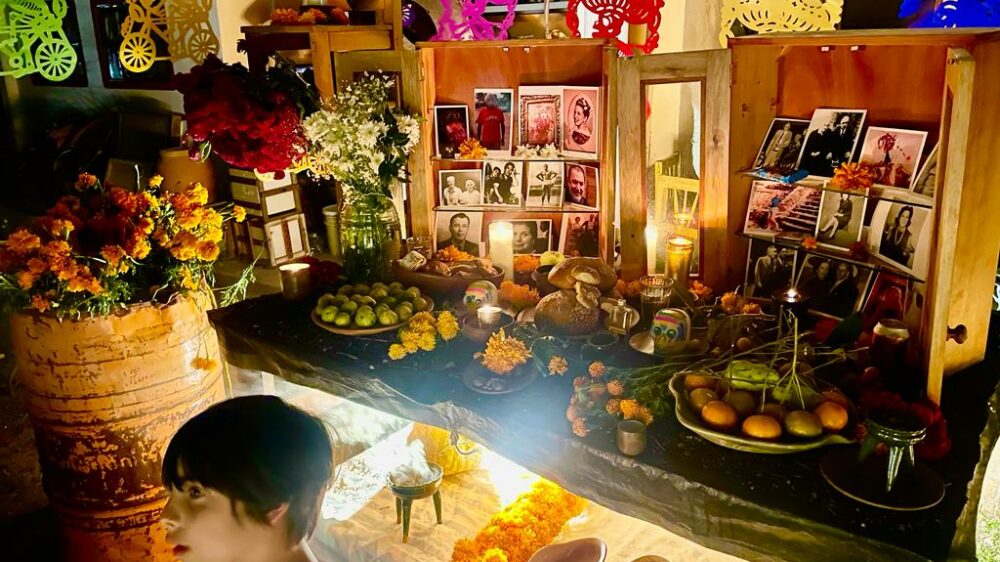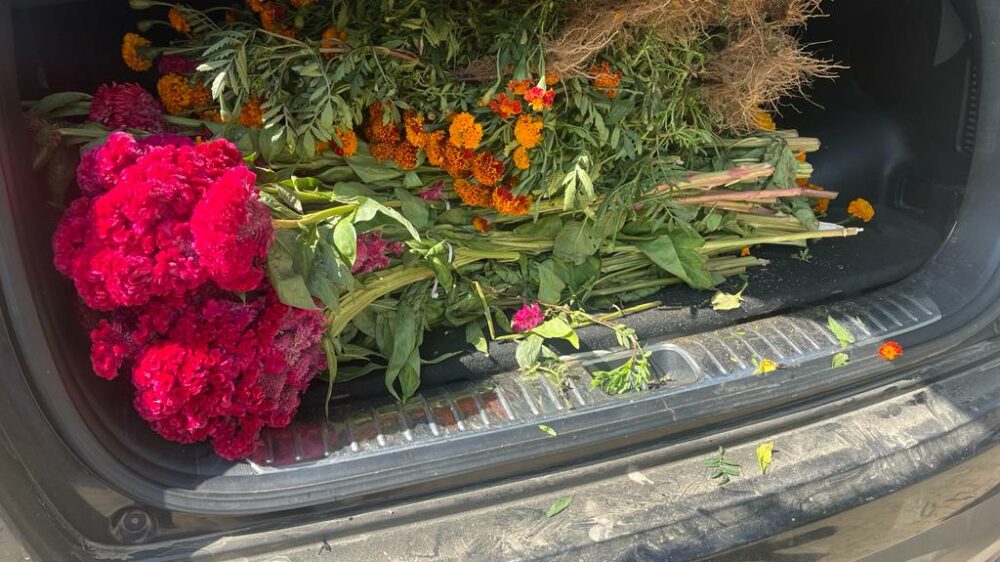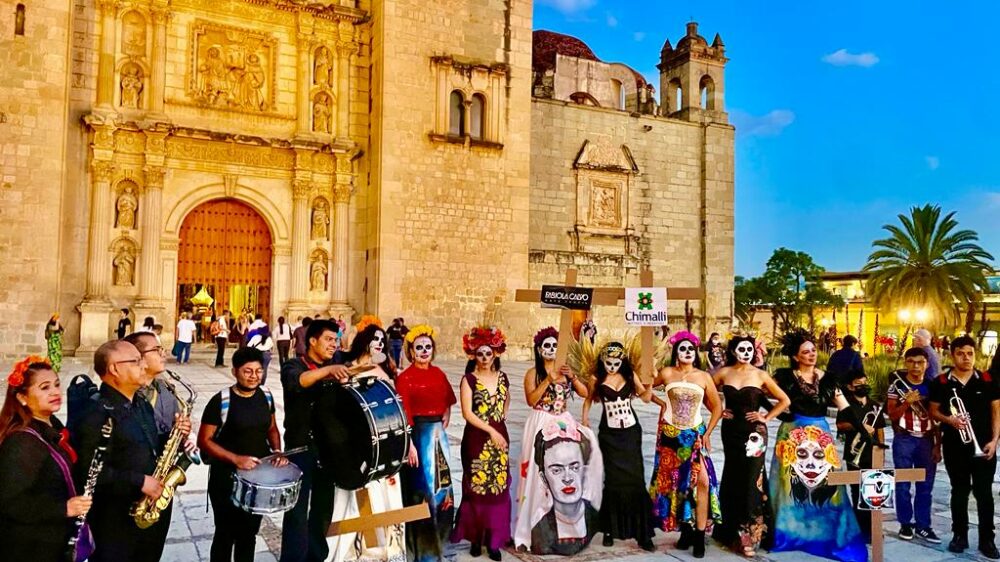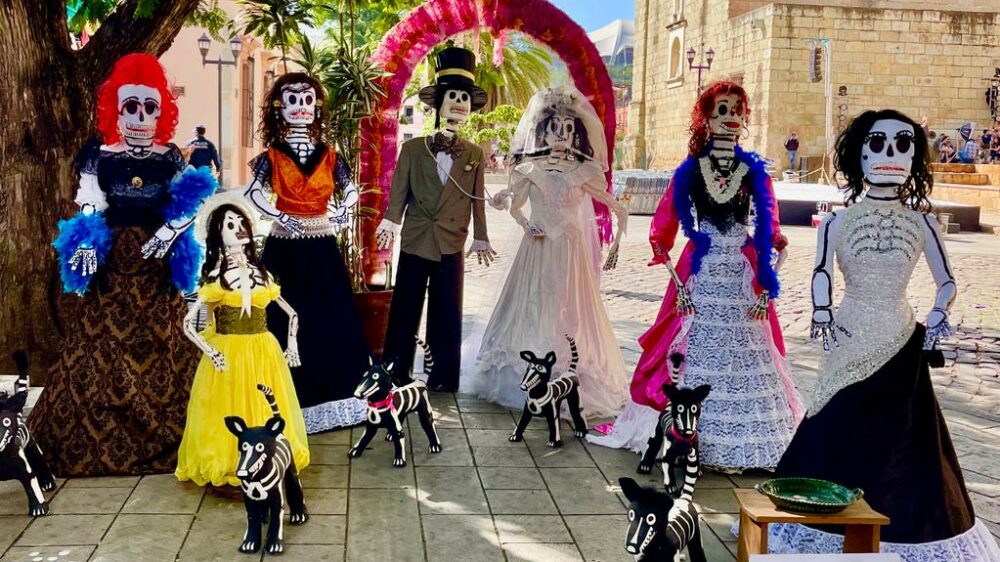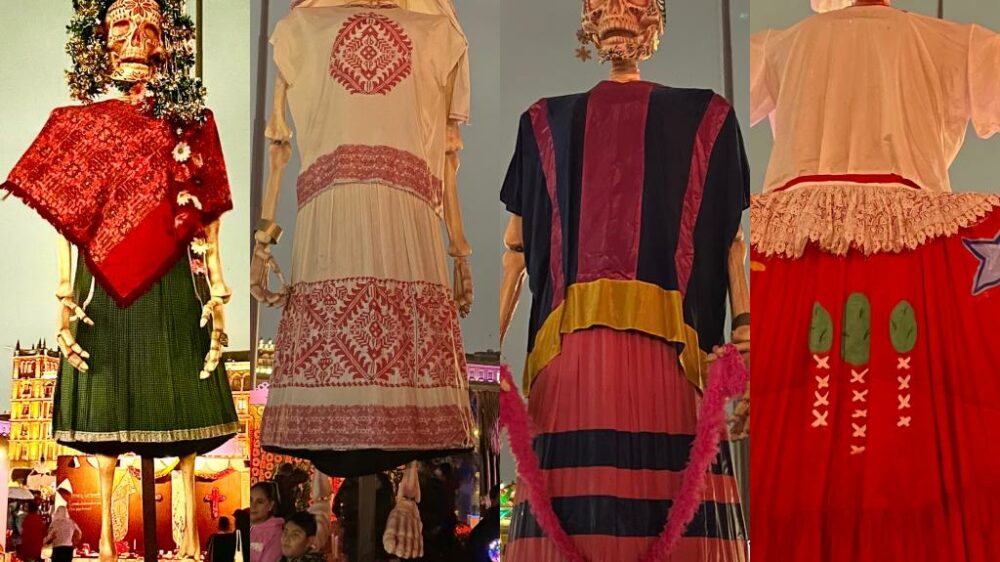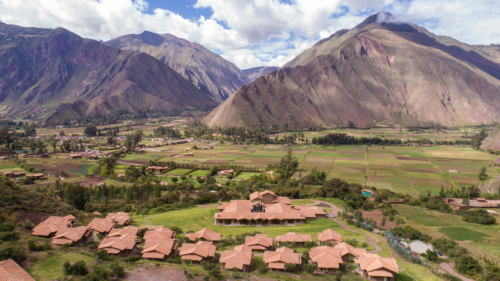Day of the Dead or Halloween?
On a recent trip to Oaxaca, one of the culinary and cultural hearts of magnificent Mexico, I was lucky enough to experience the wonder, strangeness and joy that is the Day of the Dead (el Dia de los Muertos). I’d always been somewhat flummoxed by the differences between Day of the Dead and Halloween and wrongly thought that Day of the Dead was just “the Mexican version of Halloween.” I was wrong in more ways than one.
For starters they are on different days—Halloween is 31st October; whereas the Day of the Dead takes place on the 1st and 2nd November. That makes sense because Hallowe’en – the eve of All Hallows – is the day before All Saints day, like Christmas Even is the day before Christmas.
Halloween emphasises the scary and the supernatural, the undead and the devilishly bad (Dracula, Frankenstein, demons and all manner of marvellous monsters). Day of the Dead is a celebration of the lives of those who have passed, a way of remembering and rejoicing in loved ones who are no longer around. Halloween tends to focus on black and red colours and motifs, while in contrast to that, the Mexican fiesta is a riot of colour and decor of every imaginable hue.
One character who seems omnipresent is the skeletonised figure (no, not Coco—but that animated film is a rather wonderful ode to the Mexican traditions) of a woman; and this is the ubiquitous Catrina, a figure that symbolises the circle of life; no matter what kind of life we’ve lead, be it rich and famous, humble and frugal, a lord and a lady or a shepherd or a saint (or indeed, a dastardly sinner of the kind that halloween might celebrate), we are all alike underneath, and we all have the same bones under that fleshy disguise.
Growing up as a goth in the north of England, I was attracted to the dark side (little sunlight penetrates north of London): The Cure, Joy Division and Siouxsie were my jam, beause they fit the mood and were a fine soundtrack to a gravelly graveyard amble. It seemed only fitting that the Day of the Dead had always been something I was fascinated by. But I’d hazard that it’s something that all could enjoy, even those who didn’t spend their teenage years dressed in black, and indeed of all ages it’s kids especially who love creating the “ofrenda” (offering) to honour the dead. These are something like altars festooned with brilliant bunting and featuring photos and pictures of passed ones along with mementoes and, usually, the booze they used to like to drink or their favourite brand of smokes. Orange marigolds make a trail from the altar to the garden entrance/house entrance/otherworld, strewn generously along the floor to light and lead the way. Cemeteries become a series of brightly lit parties, featuring fairy lights and mezcal, live music and dancing, as folk visit and toast at the graves of the dear departed.
Oaxaca is only one of many places where you can enjoy and take part in these life-affirming joyful acts of remembrance, and it is possibly one of the more authentic, but CDMX, San Miguel de Allende, Merida and Puerto Vallarta all offer their own takes on the fiesta with the famed parade in the capital being very much like the Day of the Dead from the James Bond movie (before Bond; there was no parade—art imitating art? Or commerce imitating commerce?)…
